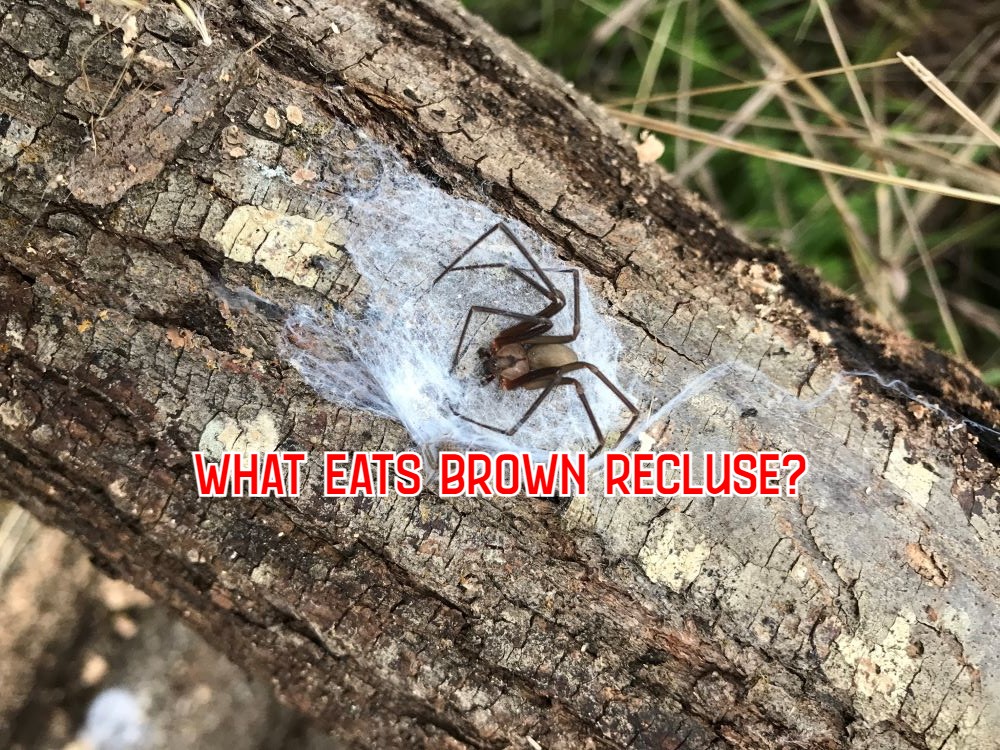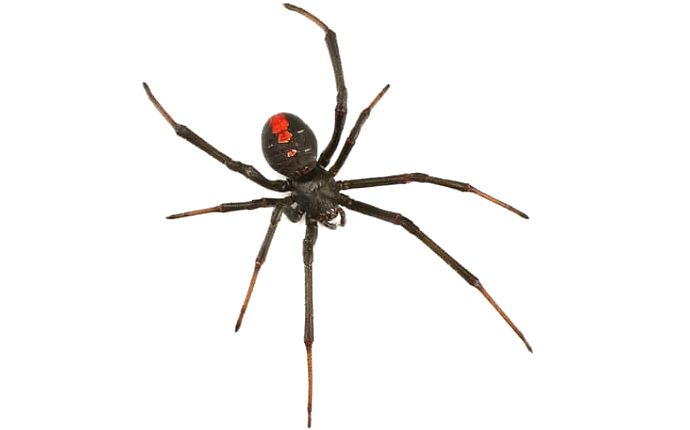Many people suffer from arachnophobia, the abnormal or irrational fear of spiders. Despite this, spiders can be beneficial, eating unwanted insects around your house. They sometimes even eat snakes. However, spiders are a part of a food chain that makes them prey as well.
Once you understand what eats spiders and how spiders fit into your local ecosystem, you can make more informed decisions about which ones to keep and when to call for pest control.
Brown recluse spiders stir up fear in many homeowners due to their venomous bites. But even these notorious arachnids have a role in nature’s food web. Understanding what eats brown recluse spiders can help shed light on how they fit into the broader ecosystem.
The brown recluse spider, also known as the violin spider or fiddleback spider, is a venomous spider found primarily in the south-central and Midwestern United States They are medium-sized spiders, usually 6 to 20 mm in body length.
Brown recluses are well-camouflaged, with a tan to dark brown color that blends in with wood and soil. They get their name from their behavior – they are shy, reclusive spiders that prefer to avoid humans.
Bites from brown recluse spiders can vary from minor localized irritation to tissue necrosis (death) in extreme cases. While serious reactions are rare, medical attention is advised if bitten
Why Do Brown Recluses Have Predators?
Despite being venomous, brown recluse spiders are still prey animals in the wild. They occupy an important niche in the ecosystem, feeding on insects and other small invertebrates. But their numbers need to be kept in check by natural predators.
Predators help regulate populations and maintain balance in the food web. Without them, species like brown recluses could experience unchecked population growth and become invasive.
Common Brown Recluse Predators
Brown recluse spiders face threats from a surprising variety of predators:
Larger Spiders
Spiders are cannibalistic, readily preying on each other. Large spiders like wolf spiders will hunt, kill, and consume brown recluses. Wolf spiders actively pursue prey, making them formidable predators.
Insects
Insects like praying mantises and crickets will prey on young, vulnerable brown recluse spiders, especially soon after hatching from eggs These ambush and ground-dwelling insect hunters help control spider populations
Birds
Many birds feed opportunistically on insects, small mice, and arachnids. Blue jays, crows, shrikes, and other ground-foraging birds will readily eat brown recluses when discovered.
Reptiles and Amphibians
Small lizards, frogs, and toads are significant brown recluse predators, especially in warmer southern regions. Fast-moving reptiles like geckos and chameleons will consume any spiders they come across.
Mammals
Shrews and certain rodents will prey on brown recluses while searching for insects and other invertebrates. Bats may also occasionally feed on the spiders.
Wasps and Centipedes
Wasps are fierce brown recluse predators, typically dragging paralyzed spiders back to their nests to feed developing larvae. Centipedes also use their venomous claws to overcome and consume the spiders.
When Are Brown Recluses Most Vulnerable?
Younger, smaller brown recluse spiders are at higher risk of getting eaten than mature adults. Spiders isolated from their silk retreats or webs are also more exposed to predation events.
Recluses detected by predators during foraging activities at night or dispersal flights through the air are unlikely to escape once spotted. Finding themselves in a predator’s home turf also leaves the spiders highly vulnerable.
Natural Pest Control?
While brown recluse predators provide natural biological control, relying on them alone is unrealistic for homeowners. Habitat modification, sealing entry points, reducing clutter, and professional pest control are necessary to safely minimize brown recluses inside houses.
That said, appreciating their role and the complex food web interactions reveals the nuances of how brown recluses fit into the broader picture. Even seemingly unpopular organisms have an ecological purpose.
Understanding the risks faced by brown recluses in the wild can help replace fear with respect for the interconnectedness of all life. Their unique predator-prey relationships showcase nature’s balance.

Getting to Know Natural Spider Predators
Spiders are an essential part of your local ecosystem, and natural predators of spiders depend on them as a food source.
The Black Widow Spider

You can easily recognize a black widow from its bulbous dark brown or shiny black abdomen with a red hourglass marking.
Will it Bite Me?! Handling a Brown Recluse!
FAQ
What are the natural predators of the brown recluse spider?
In the wild, brown recluse spiders have a number of natural predators, including: Wolf spiders. Crickets. Praying mantis.
What kills brown recluse instantly?
-
- Aerosol Sprays: Use insecticidal aerosol sprays specifically designed for spiders, spraying directly onto the spider for immediate kill.
- Residual Insecticides: For more persistent control, use residual insecticides as a perimeter spray or in cracks and crevices where spiders are likely to hide.
- Examples: Demand CS, TalstarOne, Tempo, Onslaught Fastcap, Suspend Poly Zone, Avesta CS, Cyper WSP.
- Aerosol Sprays: Use insecticidal aerosol sprays specifically designed for spiders, spraying directly onto the spider for immediate kill.
-
This natural substance, made from crushed fossilized algae, dehydrates spiders by absorbing their fats and oils.
-
For severe infestations, a full fumigation of your home may be necessary, using chemical gasses to kill spiders and their eggs.
What are the enemies of the brown recluse?
Brown recluses are timid species. Their enemies- humans- birds-insects-and other spiders hunt on the brown recluse. A Brown recluse is Brown or tan colored. they have a mark on their body shaped like a violin and a fiddleback.
What makes brown recluse spiders go away?
Get rid of Brown Recluse spiders by first eliminating their hiding areas’ favorable conditions. Inspect for brown recluse spiders and either vacuum them or spray them with a contact aerosol like CB 80 Aerosol.
